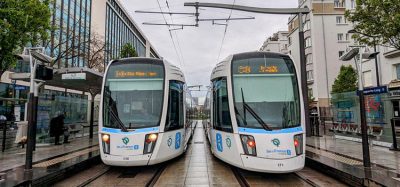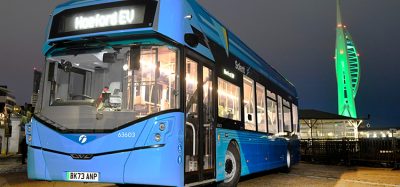All change for Metro to benefit future generations
- Like
- Digg
- Del
- Tumblr
- VKontakte
- Buffer
- Love This
- Odnoklassniki
- Meneame
- Blogger
- Amazon
- Yahoo Mail
- Gmail
- AOL
- Newsvine
- HackerNews
- Evernote
- MySpace
- Mail.ru
- Viadeo
- Line
- Comments
- Yummly
- SMS
- Viber
- Telegram
- Subscribe
- Skype
- Facebook Messenger
- Kakao
- LiveJournal
- Yammer
- Edgar
- Fintel
- Mix
- Instapaper
- Copy Link
Posted: 20 August 2014 | Raymond Johnstone, Director of Rail and Infrastructure of Nexus. | No comments yet
Metro is a major part of the public transport network in North East England. Nexus, the public body which owns the Metro system, is into the fifth year of a £389 million modernisation programme. Director of Rail and Infrastructure of Nexus, Raymond Johnstone, gave us an update on the project.
Metro is an iconic part of everyday life in our region. When the system was built in the late-1970s it was a brilliant feat of urban transport planning and a triumph for local politicians, who successfully persuaded the Government of the day to finance the project. Metro began carrying passengers in the summer of 1980, with the original network complete in 1984, and new lines added in 1991 and 2002. By 2005 it was clear that the Metro system was in need of fresh investment. A successful business case was presented to UK Government ministers and by 2010 the Department for Transport (DfT) agreed a £350 million funding package for the wholesale renewal of the system over 11 years, with a contribution from local authorities bringing the scheme up to £389 million. The ‘Metro: all change’ modernisation programme was born. Alongside the infrastructure modernisation, the programme includes refurbishment of trains and stations to modern standards of accessibility and amenity, and replacement of life-expired lifts, escalators and canopies.
The importance of the programme cannot be underestimated. Metro carries 37 million passengers a year. The benefit-cost ratio of investment is about eight to one – a £2.5 billion return on £389 million – compared to the economic impact of Metro declining, leading to shrinking travel to work areas, 10,000 fewer visits into the city of Newcastle daily. Metro ensures that 15 million car journeys are taken off the region’s roads every year, which reduces congestion. Metro is vital for getting people to places of work and leisure. The aim of the project that we are undertaking is to ensure that Metro is around for the benefit of future generations.
Rapid and efficient progress
A great deal of progress has been made with the modernisation work since we started the programme. The period from April 2010 to January 2014 has seen £144 million invested across 113 completed projects and 81 are now live, in line with planned output. We are nearly half way through the track replacement programme, with 24km out of the 60km successfully completed. Twelve of the 60 stations on Metro have been modernised, with new seating, lighting and improved standards of accessibility. We have replaced 14 escalators, six passenger lifts, installed 225 new ticket machines and refurbished 57 of the Metrocars from a fleet totalling 90. The UK Government has set stringent targets, with funding after Year Three conditional on efficient delivery. The first audit milestone, covering 2010-13, saw the DfT approve 100% funding of £93 million for 2013-16, including a 15% conditional element.
Large-scale track replacement work
By far the biggest challenge over the last four years has been planning and replacing the track while keeping as much of the system running as we possibly can. By 2005 we knew that the 60km of infrastructure was at growing risk of failure – the legacy of a long period without a strategic approach to asset renewal. Unstressed track mounted on wooden sleepers was vulnerable to misalignment; poor drainage meant key sections were prone to flooding, and serious failures due to subsidence and embankment collapse had happened twice and risked re-occurring.
Major line closures have been utilised for the ‘big ticket’ track replacement projects, new junctions and structures. Since 2010 we have carried out four major closures. A 27-day line closure in August 2013 was the biggest engineering programme on Metro since the system was built in the mid-1970s and involved the replacement of 6km of track and track bed on the busiest part of the system in Newcastle, between Haymarket and South Gosforth. We laid 560 tonnes of new rail and 7,000 sleepers. This is a section of line that sees 30,000 passenger journeys each day, 450 train movements and a service every three minutes in peak periods. A further 5.5km of track was successfully replaced on Metro’s coastal route between Tynemouth and Wallsend during two major closures in 2011 and 2012.
As a permanent way framework contractor, Balfour Beatty Rail has completed most of the major track replacement work on behalf of Nexus. One of the key logistical challenges for the Balfour Beatty Rail team was the fact there was only one crossover within the limits of the blockade (2012 blockade between Tynemouth and Wallsend), which severely restricted the movement of plant and materials around the various work sites. This led to the introduction of a Non-Intrusive Crossover System (NICS).
The system, which was developed by NICS Ltd, provides a simple, robust, cost-effective solution to installing temporary crossovers without the need to cut into the existing track. It lifts the train up by 48mm, supporting its weight while turning it round from the parent track, crossing it onto the other track and guiding it back to the correct alignment before lowering it onto the other track. The system was installed without impacting on the existing tracks or signalling and can remain in situ (locked when out of use) when the lines are open.
“This was the only way we could see, economically and practically, of achieving the output required within the timescales available,” Balfour Beatty Rail’s Project Manager, Mark Wood explained. The implementation of NICS on the major line closure not only facilitated more efficient use of engineering trains and plant but also allowed the renewal of both tracks within one blockade, obviating the need for another closure at the same location the following year, with additional station closures.
New-look stations
After infrastructure, station modernisation work is a big part of our investment programme. We are determined to ensure that we improve accessibility on Metro to an even higher standard, while also providing our customers with brighter, cleaner and more secure station facilities.
A total of 12 Metro stations have so far undergone refurbishment work since 2010. In some cases stations have been completely rebuilt, while others have had the existing structures remodelled. All of our stations are being rebranded in line with a new, more modern Metro colour scheme, matching that of our new-look trains.
Suburban stations are getting new vitreous enamel panels and new way finding signage, along with new seating and improved lighting. Double height hand rails, tactile paving, colour variation floor tiling and anti-slip surfacing will dramatically improve access for passengers with reduced mobility. Some of our suburban stations will have had passenger lifts replaced, while others, which previously had ramped access, will get new lifts installed for the first time.
Major city centre stations, most of which are sub-surface, will undergo more extensive modernisation. Our busiest station is Monument Metro station in the centre of Newcastle, which is used by 10 million passengers a year and is one of the top 10 busiest UK train stations outside the London area. Monument is scheduled to be modernised later in the programme, in 2019. The blueprint for this project is the major rebuild that was carried out at Haymarket Metro station, also in Newcastle city centre, in 2007, which was completed in 2010.
This £20 million flagship project, which was funded privately, saw the station structure completely rebuilt above ground and underground, improving passengers’ services with new escalator access, better information and a bright new image. The development allowed for a complete re-design of an underground Metro station that is serving as the blueprint for future modernisation. The Haymarket project created 10,000ft2 of new retail space and 40,000ft2 of office space in the heart of Newcastle, transforming an under-exploited city centre station site. Nexus places great importance in the commissioning of new permanent public art within the public transport environment, and the developer made an equal commitment, funding new work for Haymarket within the project. Canon, by the internationally-recognised artist Lothar Goetz, features bands of colour circling round the tunnel walls, highlighting the architectural form and giving the station a unique, instantly-appealing and striking appearance.
The other major station rebuild over the last four years is at North Shields Metro station in North Tyneside. Nexus completed this multi-million pound redevelopment, which is used by two million passengers a year, in 2012. The work has involved completely rebuilding the station concourse, giving it a bigger and better concourse building, lifts to the platforms for the first time and an eye-catching new-look with ‘floating wave’ canopies above the platforms.
Train fleet refurbishment
We have earmarked £30 million for the complete refurbishment of our fleet of trains, a project delivered for us through Deutsche Bahn – the concessionaire which operates trains and stations on our behalf. This year the fleet refurbishment programme reached the halfway mark, with the project on schedule to be finished by May 2015.
Extensive refurbishment work has been completed on a total of 57 Metrocars, which are now back in service, with a further 29 set to be ready by 2015. The work has seen the existing Metro fleet undergo numerous updates and improvements, providing passengers with a brighter and more comfortable journey.
Investment in rail maintenance vehicles
We have invested £2.3 million in a new track tamping vehicle, which was supplied by Plasser and Theurer, based in Linz in Austria. The vehicle, which is known as an on-track tamping machine, will be primarily used to sustain track geometry levels and alignment in accordance with UK rail industry standards.
This investment ensures that we have the best equipment money can buy in order to maintain our tracks for many years to come. What we have bought is the very latest and one of the very best rail maintenance vehicles on the market. This is a key part of our £389 million Metro: all change modernisation programme as it goes forward this year.
The tamping machine replaces our existing maintenance vehicle. It is capable of getting through a lot more work and to a much higher specification. The machine is a UK leader, being the first main line specification machine designed to fit on a metro system.
Head of Maintenance Delivery for Nexus, Phil Kirkland, said: “We’re very much looking forward to getting this new vehicle into use on our very busy Metro maintenance and modernisation programme. There are a lot more systems on this new tamper that make it more accurate and more cost-effective for us in the long-term.”
The hard work continues
We have achieved so much over the past four and a half years and everyone at Nexus can feel rightly proud of how far we’ve come. The UK Government has recognised this enduring success story through its continued commitment to what is now the biggest investment and engineering programme in Metro’s history. It is with great pride that we can look back on all of the projects we have completed so far, and we look forward to the years ahead with excitement. North East England was the birthplace of the railways and we are honoured to operate over some of the very earliest alignments. These routes are embedded in the community, and we must never forget that as we take forward our ambitious modernisation programme over the next six years. The hard work will carry on.
Metro: all change modernisation programme in numbers
The Metro: all change modernisation programme began in 2010 when the Government agreed to £389 million of funding for the modernisation of the 34 year-old Tyne and Wear Metro system.
Progress so far in numbers:
Stations modernised: 12
Trains refurbished: 57
New track: 24km
New cable and ducting routes: 25km
Bridges modernised: 20
New escalators: 14
New lifts: 6
New train wash fitted at the Metro Depot: 1
Installation of new smart ticket machines: 225
New automatic gatelines at key stations: 11
Investment breaks down as:
Structures: £26 million (of £63 million forecast to 2021)
Track and overhead line: £36 million (£94 million)
Stations: £20 million (£57 million)
Signalling and telecoms: £17 million (£61 million)
Equipment and plant: £4 million (£7 million)
Mechanical, electrical and power: £8 million (£17 million)
Metrocars: £19 million (£30 million)
Fare collection: £2 million (£2 million)
Further Reading
In Eurotransport Issue 6 2014 (December 2014), we will feature an article from DB Regio Tyne and Wear (DBTW) – the operations contractor for the Tyne and Wear Metro – which will cover details of Nexus’ £30 million fleet refurbishment as part of the modernisation programme. To guarantee you receive the issue and learn more about Nexus’ commitment to improvements, become a subscriber to Eurotransport by visiting www.eurotransportmagazine.com or contact Karen Hutchinson via email at [email protected].
Biography
Raymond Johnstone is the Director of Rail and Infrastructure for Nexus – the Passenger Transport Executive for Tyne and Wear which owns and manages Metro. Raymond joined Nexus in September 2009 as Rail Director, before joining the Executive Board in 2013. Raymond has a 35-year career in the UK railway industry having previously worked in managerial roles for British Rail, ScotRail and Network Rail.
Related topics
Business Models, Infrastructure & Urban Planning
Issue
Issue 4 2014
Related modes
Light Rail
Related cities
United Kingdom
Related organisations
Nexus







